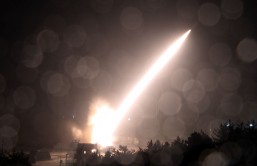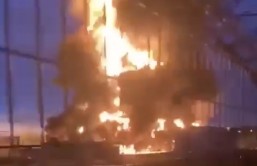NASA is getting a better handle on auroras, thanks to citizen scientists. Twitter and other social media platforms are helping scientists track the appearance of auroras and the causes behind them.
On the evening of Oct. 24, 2011, the space weather scientist Liz MacDonald knew that a geomagnetic storm that was occurring would cause a possible aurora in some parts of the country that evening. While she didn't see the aurora, she was fascinated by the amount of aurora-related tweets she witnessed; people across the eastern United States from Alabama to Chicago tweeted about seeing the aurora in real time.
After witnessing this viral response, MacDonald began a citizen science project that tracks auroras through the project's website, mobile apps and Twitter. This project, called Aurorasaurus, has now documented some of the biggest and recent aurora displays.
Improving space weather forecasts and studying auroras are important. This is largely because auroras are features of geomagnetic storms. While these storms can lead to beautiful auroral displays, they can also cause power outages and interrupt satellite systems. Though many satellites study the sun and near-Earth space environment responsible for auroras, predicting precisely where, when and how strongly the dancing natural light display will occur on Earth is challenging. This is largely because large geomagnetic storms occur infrequently, so scientists simply don't have much data on them.
Aurorasaurus can help with this issue. It can provide more data points in the form of citizen science observations; sky watchers can submit their aurora sightings directly to aurorasaurus.org or use a few Aurorasaurus mobile app.
"Without the citizen science observations, Aurorasaurus wouldn't have been able to improve our models of where people can see the aurora," said Nathan Case, the new study's lead author. "The team is very thankful for our community's dedication and are excited to have more people sign up."
With a larger number of actively participating users, Aurorasaurus can be a great research tool in other disciplines. As an example, information scientists from Pennsylvania State University are analyzing Aurorasaurus as a prototype early warning system for emergency responders.
"The short term version for Aurorasaurus is to become an interactive hub for aurora enthusiasts at the intersections of citizens and science," said MacDonald. "Long term, this engaged community can be sustained and evolve together-and the tools can be expanded to be useful in other disciplines within our technological society."








